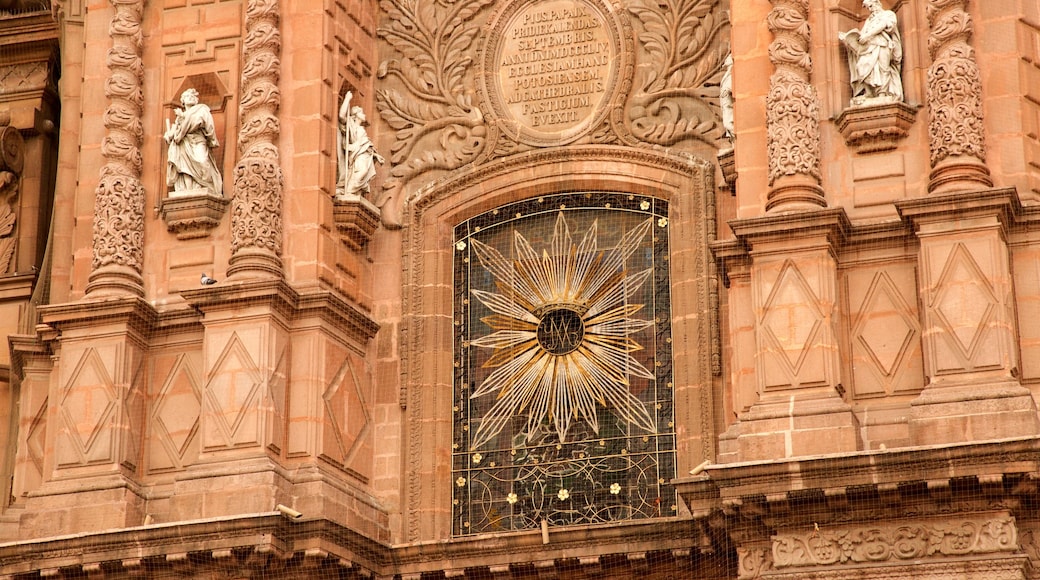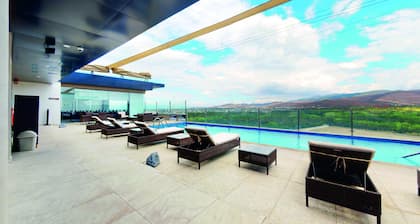サン ルイス ポトシ大聖堂 ツアーとアクティビティ





サン ルイス ポトシ大聖堂への旅行
人気の観光スポット
プラザ デ アルマス
3/5(口コミ 1 件)
プラザ デ アルマスは、サン ルイス ポトシで見逃せない名所のほんの一例です。旅行中には、その他の観光スポットもめぐりましょう。またこのエリアでは、時間を取ってショップをめぐりましょう。
Jardin Hidalgo
Jardin Hidalgoに立ち寄れば、サン ルイス ポトシの歴史について知識を深められます。 またこのエリアでは、フェスティバルや大聖堂が必見です。
サンルイス・ポトシのアルマス広場
サンルイス・ポトシのアルマス広場を訪れれば、サン ルイス ポトシの歴史について知識を深められます。 またこのエリアでは、時間を取ってショップをめぐりましょう。
ムセオ オソニアノ
サン ルイス ポトシでは、ムセオ オソニアノのさまざまな展示物を見学しながら、充実した午後を過ごすことができます。 またこのエリアでは、時間を取ってショップをめぐりましょう。
プラザ デル カルメン
4/5(口コミ 2 件)
プラザ デル カルメンに立ち寄れば、サン ルイス ポトシの歴史について学べます。 またこのエリアでは、時間を取ってショップをめぐりましょう。
サン ルイス ポトシ大聖堂周辺のおすすめホテル

レアル プラザ
Av. Venustiano Carranza 890, Colonia Moderna, San Luis Potosi, SLP

ハンプトン イン サン ルイス ポトシ
Av. Salvador Nava Martinez 3105, San Luis Potosi, SLP

NH サン ルイス ポトシ
Avenida Venustiano Carranza 1460, San Luis Potosi, SLP

リアル イン サン ルイス ポトシ
Carretera A Guadalajara 1100, Fraccionamiento La Loma, San Luis Potosi, SLP

グラン ホテル コンコーディア
Calle José María Morelos No. 705, Zona Centro, San Luis Potosi, SLP

フィエスタ アメリカーナ サン ルイス ポトシ
AV SALVADOR NAVA MARTINEZ 3125, EL PASEO, San Luis Potosi, SLP

ホテル パノラマ
Av. Venustiano Carranza No. 315, Zona Centro, San Luis Potosi, SLP

シティエクスプレスジュニア by マリオットサンルイスポトシカランサ
Av Venustiano Carranza No 1513, Los Alamos, San Luis Potosi, SLP

ワン サン ルイス ポトシ グロリエタ フアレス
Av. Benito Juarez num. 140, Col. Prados Glorieta, San Luis Potosi, SLP
表示料金は、過去 24 時間における 1 泊大人 2 名利用時の最低価格です。料金および空室状況は変動する場合があります。別途、利用規約が適用される場合があります。
エクスペディアで世界の旅へ
エクスペディアで世界の旅へ
* 個別に予約した同じコンポーネントの価格と比較した、パッケージ予約に基づく割引額。すべてのパッケージで割引を利用できるわけではありません。航空券+ホテル予約で航空券が最大全額OFF - 割引額は、すべての割引とリワードが適用される前の、航空券 + ホテルのセット料金と、航空券とホテルを個別に予約した場合の料金との比較に基づきます。セット予約の割引額は、最大で航空券全額に相当します。割引額は、出発地 / 目的地、宿泊数、宿泊期間、旅行サービス業者によって変動します。すべての航空券 + ホテルのセット予約に割引が適用されるわけではありません。